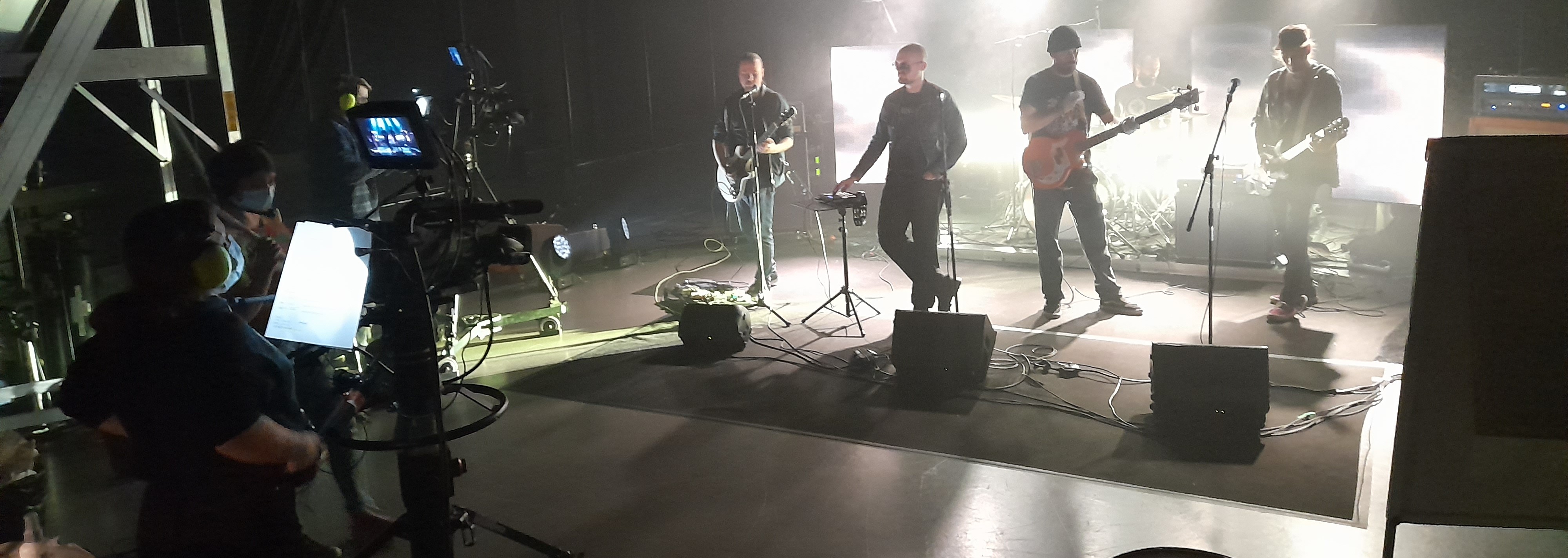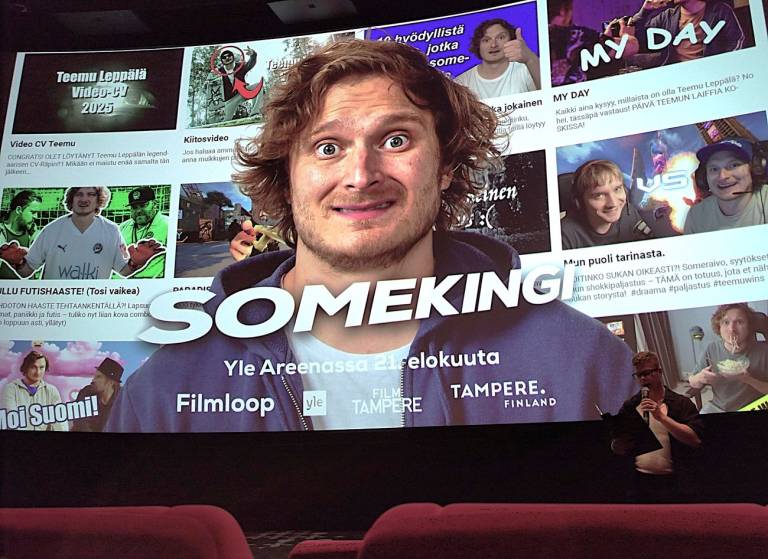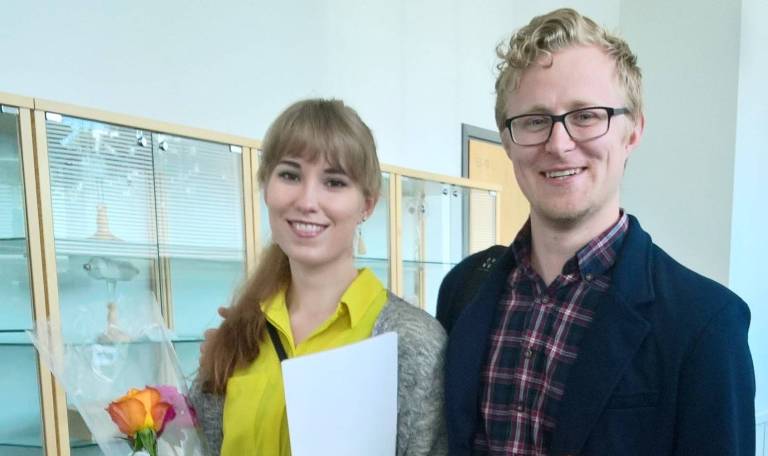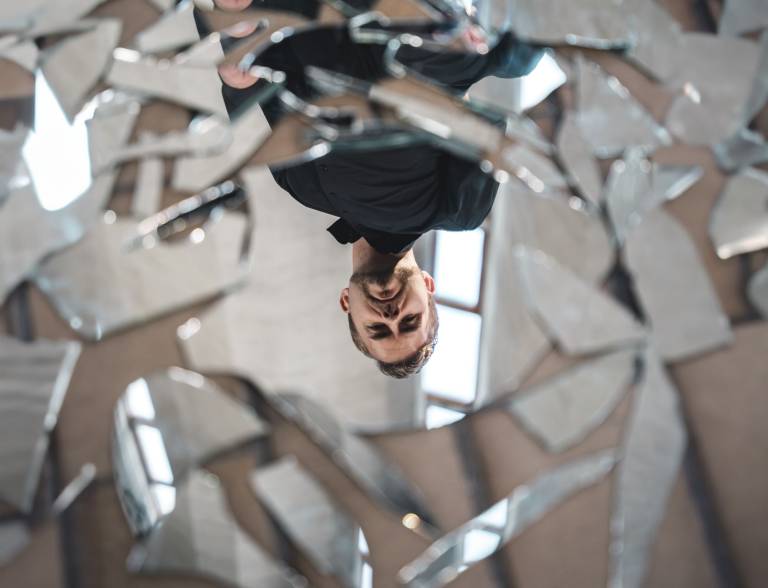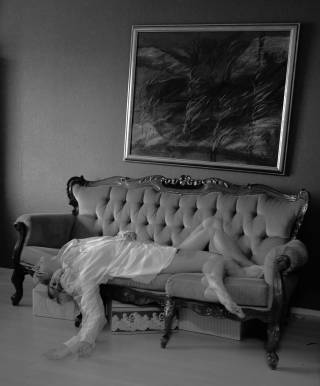
While I’ve always been interested in very traditional types of art –painting, drawing, representational sculpture– I’ve never really gotten into video art, installations or conceptual art. This course, however, changed that. I think the only reason I haven’t understood these types of works is because I haven’t tried to do so. For example, I’ve rarely sat through entire video pieces because I haven’t had the patience, or I’ve lost interest, or there’s been something more immediately gratifying in the next room. Now I realise that I’ve probably missed a lot of great art just because I haven’t given those pieces my time of day.
Conceptual art has always been one of the hardest forms of art for me to understand. I guess I’ve always thought that if there’s something to be said, the artist could’ve just painted a painting or written a poem about the subject. The introduction of Rirkrit Tirvanija’s (1961-) works made me really think about what makes art art. I don’t know whether to categorise his art as installation or conceptual art or both, but nonetheless his works made me realise that he truly could not execute his vision of bringing people together in any other way than actually bringing people together. What surprised me during class was not that some people didn’t understand why his works are considered fine art, but that I did. I realised that art can be about a concept or an idea, and bringing out that idea can be art, regardless of its aesthetics or permanence. Another conceptual artist that made me rethink my indifference toward conceptual art is Felix Gonzáles Torses (1957-1996). His works made me realise just how powerful conceptual art can be. The works are very simple but brutal; a pile of candies representing his partner’s weight loss and health diminishing one by one as the audience takes their share, eventually leading up to his untimely death. I found that very moving, and truly appreciate the idea behind the work. While in the past I might have overlooked it as ”just a pile of candy”, I now see the representation of death, loss, and the horror of the AIDS crisis.
One of the things that I’ve begun to think about during this course is whether or not art needs an audience in order to be art. I’m very fascinated by the relationships between the art, the artist, and the audience, and I love Marina Abramovic’s (1946-) performances that explore just that. Obviously in some cases, such as Abramovic’s, Rirkrit Tirvanija’s and Felix Gonzáles Torses’, the art couldn’t exist in its full potential without the audience’s participation. If Tirvanija made the same curry he makes at his exhibitions for his family, would that be art? I don’t think so. But what about art that can exist without an audience but is never shown to one? For example, say a Picasso painting resurfaced, a painting that was for whatever reason hidden away for decades. In this instance I think there’d be a strong consensus that the piece has been art the entire time it’s been hidden. What about someone who makes beautiful pieces but never shows it to anyone? Is it art in every sense of the word? What happens if there were only one person at Abramovic’s performance? I really don’t know. And that’s ok.
I’ve also learned about other dimensions of what makes art art than the possible necessity of an audience. For example, Petra Cortright’s (1986-) gifs and internet art can be a tough bit to swallow, and I feel like I’m still in the process of digesting it. However, the more I think about it, the more I feel like the way she’s pushing the boundaries of what art can be is in itself art. Process over result. But how far can art be pushed? Can plagiarism be art? Richard Prince (1949-) sure seems to think so, as do the people who buy his works. Well, if you can really even call them his. Prince has taken photos of other people’s photos and showcased the results as his own work. I chose him as of of the three artists that interests me the most out of the ones we discussed during this course, not because I’m inspired by him, but because he makes me have to untie the knot in my brain that appears when I think about his work. Naturally the first and foremost feeling one gets from learning about his career is anger, an emotion I’m in the middle of processing. But what if his art is conceptual? What if his art is not the photographs he takes of other people’s photographs, but the process of getting away with it? What if his art is about the absurdity of the artworld, and how nothing we do and make is original anymore because all ideas have been exhausted, leaving us copying each other in circles. Maybe he’s trying to push the boundaries of art into a breaking point, the point where art doesn’t even have to be creative. Creativity is the lifeline of art, an aspect of art that I’ve never heard of being questioned. If Prince were to come out and say that his art is conceptual, and it aims to question the necessity of creativity in art, would people be less mad? I might be.
Santiago Sierra (1966-) is another artist who is really pushing the limits of art. His work is sometimes morally dubious, and raises the age old question: do the ends justify the means? While I agree with his anticapitalist and revolutionatist politics, I can’t help but feel rage at the way he brings out his message. I find it counterproductive to point out problems in society by becoming a part of the problem. This is what he had to say about tattooing four sex workers for the price of a dose of heroin: ”The tattoo is not the problem. The problem is the existence of social conditions that allow me to make this work.” For once I agree. The tattoo works aren’t, in my opinion, the worst of the lot. They point out a societal problem, and don’t cause any physical or psychological damage. If he were to only subject people to quite harmless practices, I’d be a big fan. However, when it comes to making people sit in cramped boxes or boxing someone into a stone cage, I can’t help but wonder whether those people actually had a choice. Even if one of those boxed up immigrants had serious claustrophobia, they’d probably still subject themselves to what would be torture to them to get food on the table. I know this piece might wake some people up about the insane things a capitalistic society makes us do, but there has to be a better way to get the message across. I know people draw the line of what’s acceptable in the name of art at different points, but how far could one go? For example, there’s an epidemic of mothers pimping out their own children, even infants, in the Philippines, because there’s no other way to pay rent and eat. If someone were to take part in this horrible cycle ”to bring light to the problem”, would that be ok? Would that be art? He is the second of my three most interesting artists, as I could write about him for hours.
The third artist that interested me the most was Francesca Woodman (1958-1981). Her works I genuinely like, but she’s also an interesting contrast to my other two. Woodman’s photographs are deeply personal instead of political, and there isn’t much information about them available. This leaves the interpretation to the viewer. I feel the stories and emotions she expresses are quite universal, so her photos are in the sweet spot of easily interpreted without being painfully obvious . The aesthetics and troubling atmospheres speak for themselves, and give me a hollow, melancholy feeling. For me, personally, they hit quite close to home, and remind me of times in my past when existing was exhausting.
This leads me to another aspect of art that I’ve learned more about during this course, which is the multitude of subjects people address with art. While it’s not new information to me that artists approach art in different ways, I’ve never been exposed to this many different views in this short amount of time, and the scope of variety has really opened up to me. Some artists make art about personal subjects, some political, some about universal, philosophical questions. Some artists combine narratives, like Felix Gonzáles Torses, whose art takes a political stance by telling a deeply personal story, or Marina Abramovic, who combines personal stories and experiences with universal questions of pain, connection, and the limits of the human body.
Each artist also brings out their message to varying degrees of obviousness. For example, I find Banksy’s work very tired. To me, he doesn’t seem like a very intellectual artist, but like someone who takes a look at facebook and makes the most obvious art about whatever’s making people angry that day. Chimps in the parliament instead of MPs? Revolutionary! A couple hugging while staring at their phones? What a unique narrative! That’s not to say that an obvious message is fundamentally a bad thing. Barbara Kruger (1945-) criticizes capitalism with a very clear approach, but I find her art much more appealing. Maybe it’s just my personal taste, but I just feel like Banksy is trying too hard to be clever only to end up being ridiculously predictable and boring. Some artists have a lot more subtle cues to what they’re trying to say, like Diane Arbus (1923-1971). While her photos aren’t screaming: give marginalized people equal rights and opportunities, they aim to normalize and give the audience a peek into the lives of people they normally might look down on. I read somewhere that the best political art is the kind that lets the viewer discover the message on their own, with a bit of time. The process of discovery makes them more likely to adapt the artist’s perspective, or at least understand and respect it.
All in all, I’ve learned a lot. Not only have I been introduced to many artists I might not otherwise have heard of or been interested in, but I’ve learned about their methods, their messages, and the relationships between the two. I’ve begun to understand types of art that have been foreign to me before, and learned to appreciate the works that have not yet fully opened up to me.
Text and artwork by Silja Tusa

